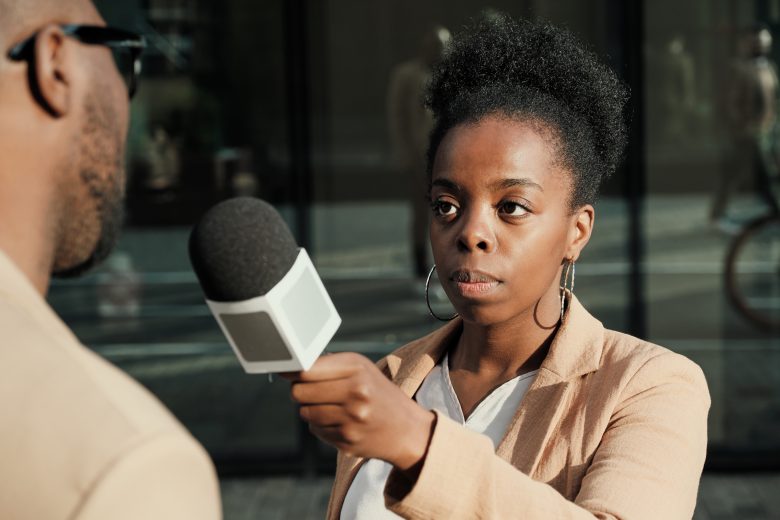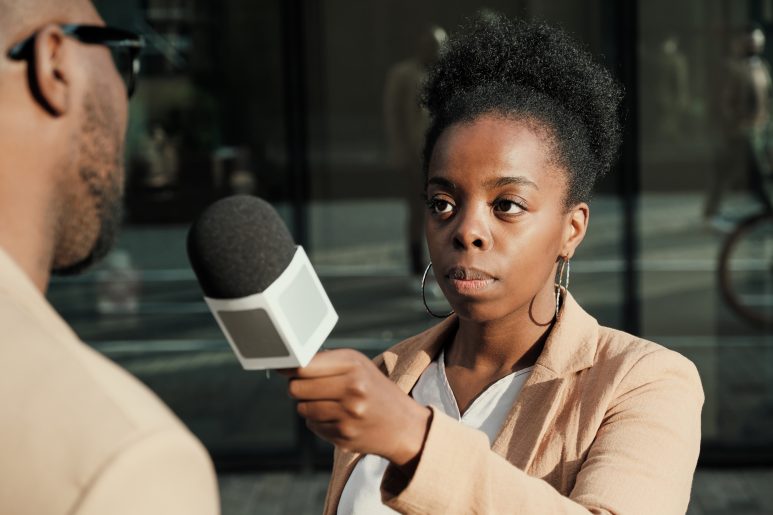By Angelo Boccato
The United Nations General Assembly adopted the International Convention on the Elimination of All Forms of Racial Discrimination (ICERD) on December 21, 1965, through Resolution 2016 (XX).
Article 7 of ICERD reads, “States Parties undertake to adopt immediate and effective measures, particularly in the fields of teaching, education, culture, and information, with a way to combating prejudices which lead to racial discrimination and to promoting understanding, tolerance, and friendship among nations and racial or ethnical groups…”

As information and its actors, the media, shape public opinion and contribute to influencing social discourse, the way stories about race or that involve it are shaped is crucial, especially at a time when the far-right discourse and hate speech are more mainstream than ever, from the White House to Europe and beyond.
So, what good practices can be found in reporting on these issues?
Guidelines to report on race
When it comes to issues around race and ethnicity, a crucial starting point is to include and consider the issue of class when reporting on this front.
Forms of racism, especially institutional racism are framed in dynamics of power and the existence of social and economic inequalities that affect minorities; this is something that was witnessed during the Covid pandemic and the Black Lives Matter protests.
When George Floyd was murdered in Minneapolis by policeman Derek Chauvin in 2020, the protests under the Black Lives Matter banner developed all over the US (and internationally) despite the great risks that mass gatherings posed, something that mainstream media at the time did not seem or did not want to grasp, focusing on property damages rather than on the roots and fruits of secular injustice.
The gaze of mainstream media in the Global North has often remained the one of the “white moderate” described by Martin Luther King, from the response to the protests of Black Lives Matter to the lack of empathy for the massacre of over 50,000 Palestinians in Gaza at the hands of the Israeli Defence Force, in what Holocaust scholars, international law experts, Amnesty International and Human Rights Watch have labelled as genocide.
But who was, and still is the “White moderate”? Martin Luther King wrote on April 16, 1963, in the isolation of a cell in Birmingham, Alabama “I have almost reached the regrettable conclusion that the Negro’s great stumbling block in the stride toward freedom is not the White Citizens Councilor or the Ku Klux Klanner but the White moderate who is more devoted to ‘order’ than to justice.”
These words keep on resonating true decades later, in the US and around the globe, for racialised communities.
As NBA’s all-time scorer and author Kareem Abdul-Jabbar wrote in 2020 in the Los Angeles Times “What you should see when you see black protesters in the age of Trump and coronavirus is people pushed to the edge, not because they want bars and nail salons open, but because they want to live. To breathe.”
Considering the element of class also maintains the issue of race anchored in history, another necessary practice.
As the Irish-Nigerian journalist, author, and broadcaster Emma Dabiri highlights in her essay “What White people can do next. From Allyship to Coalition” the Barbados Slavery Code of 1661 codified in law racism for the first time in history by labelling enslaved Africans as cattle; Dabiri also highlights that a driving reason for this was the fear of English elites that enslaved Africans and indentured European workers in the Caribbean and the colonies could develop solidarity and find unity in their struggle.
This crucial element also underlines how race and class have been historically intertwined.
Focusing on empathy, history, class, and awareness of injustice and inequalities are crucial guidelines for reporting on race. While changes require time, several journalists and outlets are leading the way.
Media and journalists leading the way
The Independent created the first position of Race correspondent in UK media and hired Nadine White for the role in 2021; White has covered a great variety of stories, from the scandal of the Home Office which affected the Windrush generation to Islamophobia, racism in cricket and migrants workers at Harrods and also curates the newsletter The Race Report, focused on “Black, Asian and minoritised communities”.
In the US, in 2020, after the murders of George Floyd, Ahmaud Aurbery, and Breonna Taylor, amid the Black Lives Matter protests and the impact of COVID-19, historian Ibrahim X Kendi and journalist Bina Venkataraman launched The Emancipator, a digital magazine that took the name (bringing it into a new age) of the abolitionist publication founded in 1820.
The Emancipator subhead is “Exploring solutions for racial equalities” and has won awards and honours, while its editor-in-chief is Jamil Smith, formerly an essayist at the Los Angeles Times, senior writer at Rolling Stone and Vox.
In Italy, journalist Sara Lemlem founded DOTZ Media in 2022, an online media focused on bringing the voices of racialised women from not privileged backgrounds initially, alongside other voices of men and women not only from minorities in the media discourse in the country, where these voices are not heard.
The level of attention in newsrooms to these issues can only increase through the diversification of newsrooms through the implementation of diversity schemes at all levels, while grants and funds can support the birth of new media where underrepresented voices sit at the table, instead of hoping for a space and a microphone.
There is also another element that must be considered: the need not to pigeonhole journalists of colour.
British journalist and author Gary Younge, who has long been a correspondent for The Guardian in the United States, first started his career following South Africa’s first democratic elections in 1994 and Nelson Mandela’s victory told Channel 4 lead presenter Krishnan Guran-Murthy in 2023 “This is always the advice I give to young non-white journalists….write about the things that you are passionate about”.
As Younge wrote in his book Dispatches from the Diaspora: From Nelson Mandela to Black Lives Matter “I have no problem being regarded as a Black writer. It’s an adjective, not an epithet. It’s not the only adjective available, and I have no interest in being confined by it. But I’m not in flight from it either.” This highlights how non-white journalists should not be confined to a topic or an issue, as their voices can touch many other topics, as is Younge’s experience.
Furthermore, Younge writes “The progress we seek will not come about through benevolence and enlightenment, but by will and resistance. It will come, as Mandela arrived and as thousands poured onto the streets to protest more recently because we demand it.”
Similarly, progress in reporting on race, ethnicity, class, and diversity needs to be demanded, especially at a time when the real cancel culture, the one from the Right and far-right aims to erase diverse and non-white stories and experiences, with the Trump Administration leading the way.
Lastly, a North Star to keep in mind when reporting on these issues can be found in Angela Davis’ words “In a racist society it is not enough to be non-racist, we must be antiracist”.
The views and opinions expressed in this article are solely those of the author and do not reflect the official policy or position of the Media Diversity Institute. Any question or comment should be addressed to [email protected]

